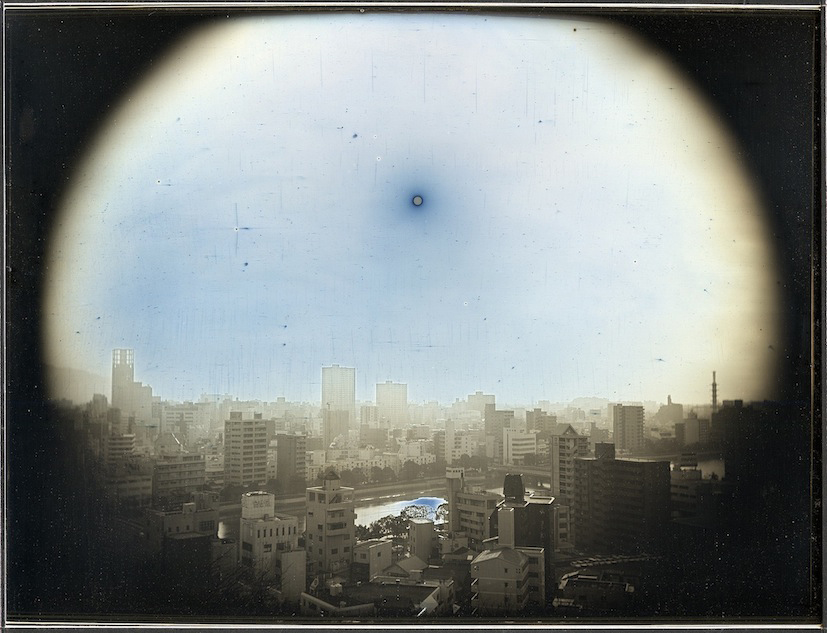In the days just after the Great East Japan Earthquake, photographers, videographers and the mass media were, quite understandably, not that welcome inside the disaster zone. As time went on and survivors faced the task of dealing with the aftermath, contact with the outside world became increasingly important, not just in terms of emergency services, but also for communicating the reality of the situation.
One strong narrative trope that has evolved around the quake and the Fukushima disaster is a connection with the bombings of Nagasaki and Hiroshima. This is a central conceit in Takashi Arai's exhibition at the Photo Gallery International, another being that the images are daguerreotypes. These small mirrorlike plates are a striking medium with which the effects of radiation can be made viscerally concrete. When Arai points his camera directly at the sun, our source of heat, light and life is turned into an ugly black blister, with buildings and people becoming dark shades imprinted on the surface of the metal in a deliberate reference to the gruesome atomic shadows burned by Fat Man and Little Boy. Visually speaking, the results are exquisite: the fantastically labor-intensive daguerreotype process results in jewel-like objects that shimmer with patches of cerulean blue and rich ochre.
The dissonance between creating beautiful images from horrific incidents, depending on your point of view, is either exploitative disaster porn or the proper realm of art in the pursuit of the sublime. Arai himself describes it as "a journey in search of the connection between heaven and Earth," or what could otherwise be called an attempt to find the sacred in the profane, a tension which has been at the root of art since Paleolithic cave painting.

















With your current subscription plan you can comment on stories. However, before writing your first comment, please create a display name in the Profile section of your subscriber account page.